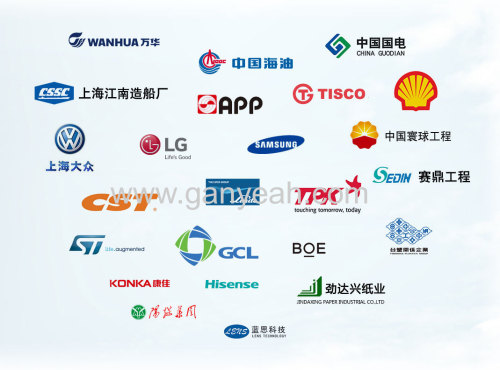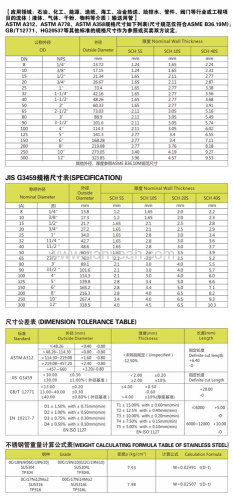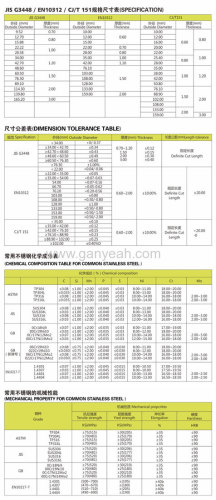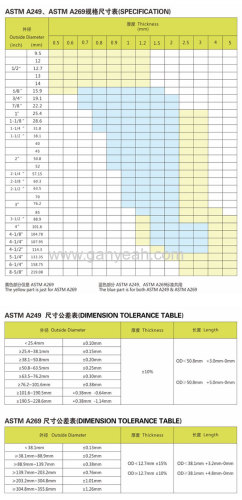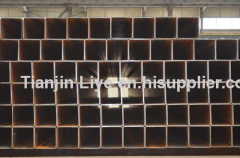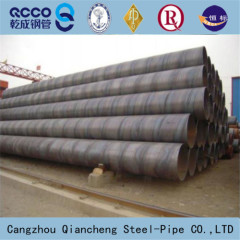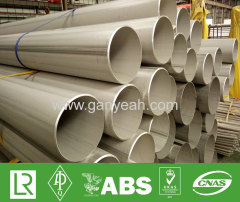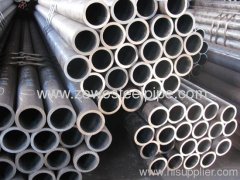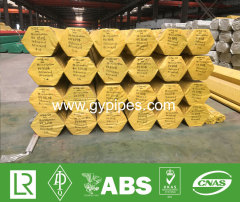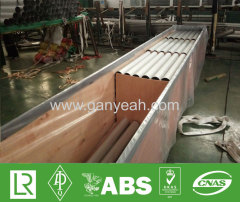
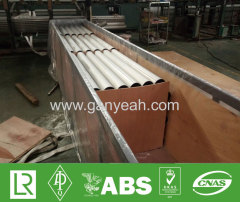
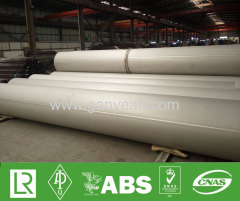
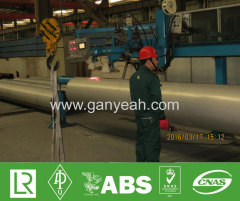
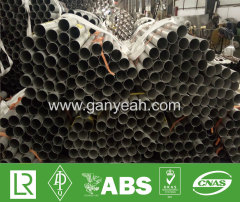
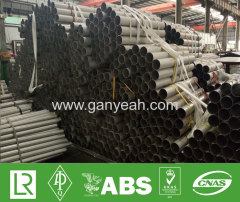
Stainless steel 316 strength erw tube
| Min. Order: | 500 Kilogram |
|---|---|
| Trade Term: | FOB,CFR,CIF,EXW |
| Payment Terms: | L/C, D/P, D/A, T/T |
| Supply Ability: | 2000Ton/Month |
| Place of Origin: | Zhejiang |
Company Profile
| Location: | Lishui, Zhejiang, China (Mainland) |
|---|---|
| Business Type: | Manufacturer, Trading Company |
Product Detail
| Model No.: | 730640 |
|---|---|
| Means of Transport: | Ocean, Land |
| Brand: | Ganyeah |
| Grade: | SUS 304/304L/ 316L/347H/S32205/S32750 |
| Standard: | Astm a312/Astm a778/Astm a554/Astm a249/JIS G3463 |
| Inspection: | UT, ET, HT, RT |
| Section Shape: | Round |
| Certification: | API 5LC,DNV•GL, ABS, TUV, LR. |
| Length: | 6 m or as customers' request |
| Surface: | Pickling,annealing,polishing,bright |
| HS Code: | 730640000/730611000 |
| Origin: | China |
| Production Capacity: | 2000Ton/Month |
| Packing: | Plastic, Wooden Case, Others Seaworthy Packing |
| Delivery Date: | 15days |
Product Description
ASTM A358 Class 1 Stainless steel 316 strength erw 1.4404 SS Pipe Welding
Stainless steel 316 strength erw is an austenitic metal, meaning that it doesn't hold or attract magnets. This makes it a popular choice for moving parts and instruments. This product is widely used in food, chemical, paper, dye, marine and pharmaceutical industries. It is made with high amounts of chromium, molybdenum and nickel, which makes it much tougher and more resistant to corrosion than 304 steelers. It is known as marine grade steel because it doesn't corrode when used for parts that are placed in warm sea waters. This is why it's commonly used for boat fittings and valves. 316L stainless steel can also be used in chloride environments and high heat.
316L alloys have great weldability, machinability and formability. It can't be made hardenable using heat treatment. Annealing can be done after forging and cold working this metal, which should be done at temperatures between 1900 and 2100 degrees F. Afterward, it should be rapidly quenched. This grade of metal can be deep drawn. Other methods of cold working can be used as well, such as swaging, roll forming, bending and cold heading. In order to relieve stresses caused by severe cold forming, annealing should be used.
Welding this metal can be performed using all standard fusion methods. Filler metals can be used for welding 316L metal. Post-weld annealing isn't needed for the heavy welded sections, like with the 316 grade of steel. When annealing this metal, it's important to watch for distortion and warping. Forging can be done at temperatures between 2100 and 2300 degrees F, but no lower than 1700 degrees F. A final anneal should be done to maintain high corrosion resistance after forging is complete.
Welded Stainless Steel Pipe
ASTM A312
Grades 304/L and 316/L
Sizes 1/4" Thru 36"
Schedules 10s, 20, 40s, 80s
316L Stainless Steel is easily welded by all commercial processes. If forging or hammer welding it is recommended to anneal after these processes to help avoid unwarranted corrosion.
Not hardenable by heat treatment, however often cold working the alloy has proven to increase hardness and tensile strength.
Sometimes know by industry professionals as marine grade stainless for its uncanny ability to resist pitting corrosion.
MINAL
DIAMETER NPSOUTSIDE
DIAMETER(MM)SCH-5S
WALL THICKNESS(MM)SCH-10S
WALL THICKNESS(MM)SSCH-40S
WALL THICKNESS(MM)
Grade 316L is very similar to 316 stainless steel. It is still considered a molybdemum-bearing grade and has properties that make it highly resistant to corrosive degradation. 316L grade stainless steel differs from 316 in that contain lower levels of carbon. The decreased level of carbon in this stainless steel makes this grade immune from sensitisation or grain boundary carbide precipitation. Because of this unique property, Grade 316L tends to be commonly used in heavy gauge welding situations. Additionally the lower carbon levels make this grade easier to machine. Like 316 stainless steel, 316L because of its austenitic structure is extremely tough, even in the most extreme of temperatures.
Chemical Formula
Carbon .03%, Manganese 2.00%, Phosphorus .045%, Sulfur .030%, Silicon .75%, Chromium 16-18.00%, Nickel 10.00-14.00%, Molybdenum 2.00-3.00%, Nitrogen-.10%, Iron- Balanced
Features
Applications
316L Grade Stainless Steel is one of the more common austenitic stainless steels. Because of its outstanding toughness against corrosion you can typical find 316L Stainless used in the following applications: food preparation equipment, pharmaceutical, marine, boat fittings, and medical implants (i.e- orthopaedic implants)
ASTM A312/A358, Stainless Steel Pipes
| 1/4 | 13.72 | 1.65 | 2.24 | |
| 3/8 | 17.15 | 1.65 | 2.31 | |
| 1/2 | 21.34 | 1.65 | 2.11 | 2.77 |
| 3/4 | 26.67 | 1.65 | 2.11 | 2.87 |
| 1 | 33.40 | 1.65 | 2.77 | 3.38 |
| 1 1/4 | 42.16 | 1.65 | 2.77 | 3.56 |
| 1 1/2 | 48.26 | 1.65 | 2.77 | 3.68 |
| 2 | 60.33 | 1.65 | 2.77 | 3.91 |
| 2 1/2 | 73.03 | 2.11 | 3.05 | 5.16 |
| 3 | 88.90 | 2.11 | 3.05 | 5.49 |
| 3 1/2 | 101.60 | 2.11 | 3.05 | 5.74 |
| 4 | 114.30 | 2.11 | 3.05 | 6.02 |
| 5 | 141.30 | 2.77 | 3.40 | 6.55 |
| 6 | 168.28 | 2.77 | 3.40 | 7.11 |
| 8 | 219.08 | 2.77 | 3.76 | 8.18 |
| 10 | 273.05 | 3.40 | 4.19 | 9.27 |
| 12 | 323.85 | 3.96 | 4.57 | 9.53 |
| 14 | 355.60 | 3.96 | 4.78 | 9.53 |
| 16 | 406.40 | 4.19 | 4.78 | 9.53 |
| 18 | 457.20 | 4.19 | 4.78 | 9.53 |
| 20 | 508.00 | 4.78 | 5.54 | 9.53 |
| 22 | 558.80 | 4.78 | 5.54 | |
| 24 | 609.60 | 5.54 | 6.35 | 9.53 |
| 30 | 762.00 | 6.35 | 7.92 | |
32 | 80 | 812.8 | 2032.0 | (Thickness):6.35~30mm Nominal diameter and wall thickness subject to the approval of vendor and purchaser | ||

